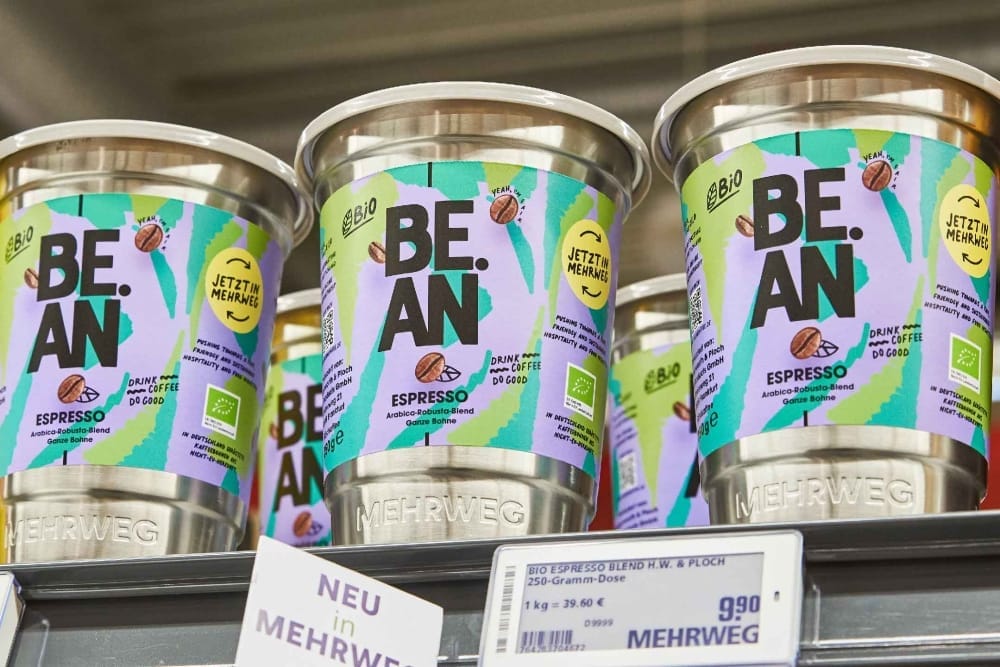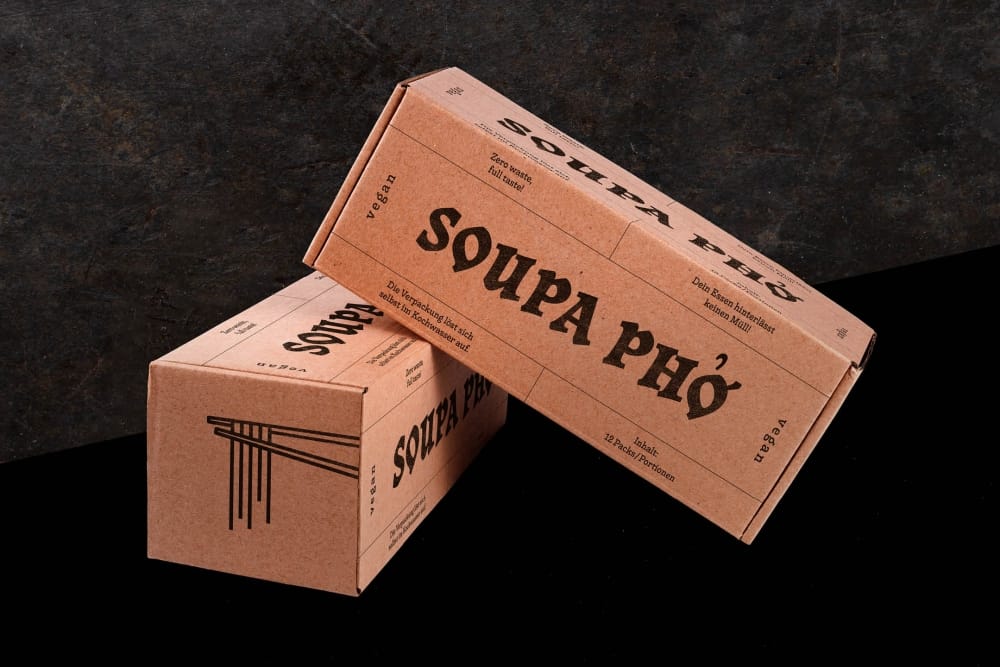SUSTAINABLE PACKAGING DESIGN
Making food packaging solutions more sustainable and successfully transforming brands.
Packaging is at the center of a broad social debate about greater sustainability in the economy – especially in the food sector. It fulfills not only functional but also emotional tasks. As a design studio, we take responsibility: we advise our customers holistically and actively contribute to accelerating the change towards sustainable food packaging.
Strategies for sustainable food packaging.
We support companies in developing a sustainable packaging strategy that enables both short-term solutions and long-term transformation. Let’s discover your potential together and realize it effectively.
Services in the field of sustainable packaging
Rethinking packaging – with people, the environment and the brand in mind. As specialists in sustainable
Our services in the field of sustainable packaging at a glance:
- Sustainability consulting & material strategy: We analyze existing packaging and develop alternatives – from recyclable monomaterials and recyclates to innovative bio-based solutions.
- Ecodesign concepts: Holistic concepts that combine packaging, product and brand in a meaningful way. Reduction and efficiency without aesthetic compromises.
- Packaging development for the circular economy: We design packaging so that it can be reused, easily separated or recycled by type – in line with circular economy principles.
- Design aesthetics for sustainable brand communication: making sustainability visible – authentic, modern and true to the brand.
- Regulatory advice: Support with legal requirements such as the Packaging Act, EPR guidelines, environmental labels and recycling labels.
- Supply chain-oriented implementation: We accompany the process from the idea to production – in close coordination with material partners and packaging manufacturers.
For us, sustainability is not an add-on, but part of the design process – strategic, creative and practical.
What exactly is “sustainable packaging”?
Sustainable packaging refers to packaging that is developed with ecological, economic and social aspects in mind. The aim is to minimize the consumption of resources, reduce environmental impact and still meet all requirements in terms of protection, transport, information and brand impact.
Which materials are considered sustainable?
Sustainable materials can be diverse – depending on the application and objective. Examples are
- Recyclable monomaterials (e.g. unmixed PET or PE)
- Fiber materials such as paper or cardboard with FSC/PEFC certification
- Recyclates from the post-consumer or post-industrial chain
- Compostable materials – where appropriate in the disposal infrastructure
How can sustainability be combined with appealing design?
Sustainability and good design are not mutually exclusive – on the contrary. Reduction, clarity and material honesty are design elements that have an aesthetic effect. The decisive factor is that the design credibly conveys the sustainability claim without drifting into “greenwashing”.
How do I find the right material for my product?
This depends heavily on the product, the logistical requirements, the target group and the distribution channels. We support material selection with in-depth analyses and a network of innovative material partners – always in line with environmental goals and brand strategy.
What does sustainable packaging design cost?
The costs vary depending on the complexity, scope and production volume. Although some sustainable materials are currently still more expensive than conventional alternatives, savings can be made in the long term through efficiency gains and positive brand impact. We provide transparent and goal-oriented advice.
What legal requirements do I have to observe?
Different requirements apply depending on the target market. In Germany, the Packaging Act (VerpackG) regulates take-back and recycling obligations, among other things. Other topics include: extended producer responsibility (EPR), recycling labels, plastics tax (EU) and life cycle assessment labeling. We help you to be on the safe side from a regulatory perspective.
How does a sustainable packaging project work?
We start with an analysis and strategy phase in which we record the objectives, target group, product and framework conditions. This is followed by design and material development with iterative concepts and tests. Finally, we accompany the implementation with production partners – right up to the final market launch.
Do you also offer redesigns of existing packaging?
Yes, sustainable redesign in particular is often about making existing solutions smarter – without a complete relaunch. We examine potential material savings, design simplification and recyclability and optimize existing packaging step by step.
Which sectors benefit particularly from sustainable packaging?
Basically all – but especially brands in the following areas:
- Food & Beverages
- Cosmetics & body care
- Household products & cleaning agents
- E-Commerce & Mail Order
In all these sectors, consumer awareness of sustainability is growing – and with it the importance of responsible packaging.
Conclusion: Sustainability as the core of the brand
Sustainable packaging is not an option – it is the order of the day. Investing in sustainable design at an early stage strengthens your brand, meets regulatory requirements and gains the trust of consumers.
At MILK., we think sustainability holistically: as a strategy, as a design approach and as an attitude. Together with our customers, we design packaging that conserves resources and arouses emotions.

